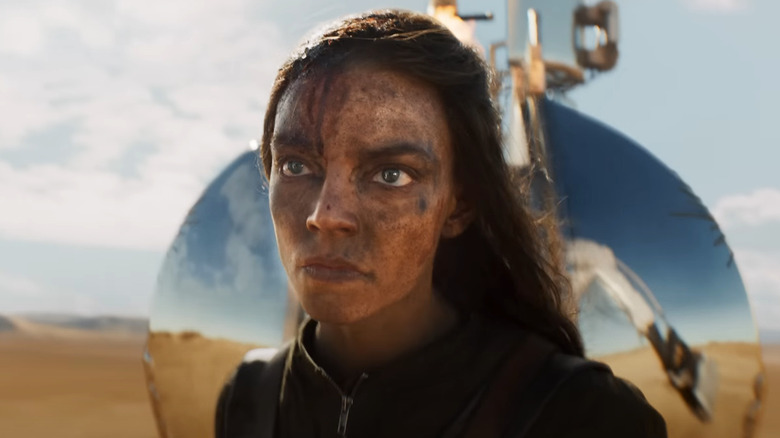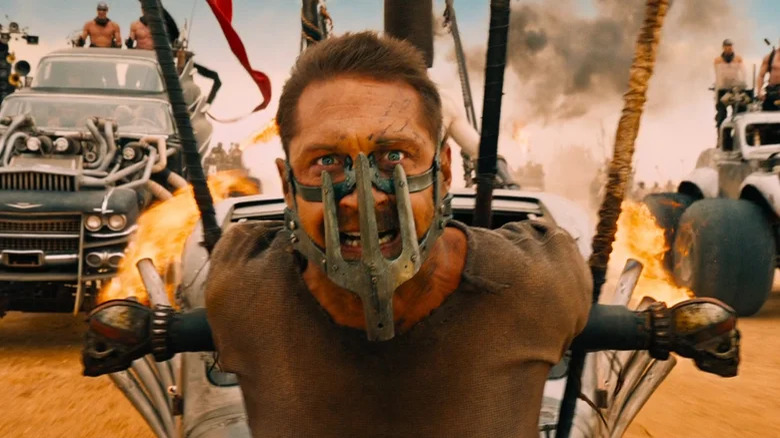Furiosa Director George Miller Credits A Classic Film Trilogy For Changing His Approach To VFX
George Miller is about to return to the wasteland with "Furiosa: A Mad Max Saga," but it might surprise some people to know that his biggest box office hit to date remains the technological marvel that is "Happy Feet."
Though you wouldn't think of "Happy Feet" as being connected to "Mad Max: Fury Road," they have some things in common — particularly their stunning visuals and how they approach VFX. Despite what some fans would like to believe, "Fury Road" is full of CGI. As Miller himself told Vulture in 2022, "There was not one shot in that movie that wasn't CGI in one way or another." The film works because it blends digital and practical effects, using CGI to enhance scenes, delete wirework, and otherwise make what is already real feel larger-than-life. This is the approach that the best movies take — the ones that understand CGI is a tool and not a shortcut. That includes movies like Peter Jackson's "Lord of the Rings" trilogy, which served as a point of inspiration for Miller when it came to CGI.
During a special "Furiosa" screening and Q&A event attended by /Film's BJ Colangelo, Miller talked about being inspired by how cinematographer Andrew Lesnie (who collaborated with Miller on "Babe: Pig in the City") approached shooting "The Lord of the Rings" and how the films' use of motion capture for Gollum made him want to use the same tech for "Happy Feet":
"I didn't want to animate every penguin because it means that the animators had to understand tap dancing," Miller said, explaining that seeing the motion capture for Gollum became an eureka moment. "We were able to use Savion Glover [...] the greatest living tap dancer by far, all that talent to make the penguins dance. That's what drives the story, the tools."
Using CGI in Fury Road
When it came time to do "Fury Road," Miller did not use motion capture to replace performances, but rather to plan stunts in advance. As the filmmaker tells it, he and his collaborators used a variety of tools (such as storyboarding) to plan out the rather dangerous and complicated stunts, along with a "massive table out in the middle of the desert" featuring models for every stunt performer, rig, and camera operator. They played with the models like little kids moving them as they'd do on the real set.
Another, more innovative way was the use of the virtual production tool PROXi, created by Guy and Harrison Norris (who supervised the stunts of "Fury Road"). Essentially, it is a pre-visualization tool that allows filmmakers to map out sequences before filming by using performance capture and real-time rendering. It is kind of similar to an animatic, but expanded to include entire virtual sets, and to show changes in real time. An example here illustrates how previs allows the production to test out different camera angles and positions, check the lighting, and even change wardrobes way in advance rather than do a stunt several times over.
"Every shot was rehearsed," Miller said. "But on the day of shoot and the days leading up to the shoot, [previs] is how it was done. How you go from two-dimensional storyboards without any regard to how time moves. You can draw arrows and things, but you can't really get the feeling of it. And it's [not] played out in real-time. Now you can do that digitally. That's the biggest change."
Real-time game engines and previs are a game-changer, and not just in live-action. It changed how "Chicken Run: Dawn of the Nugget" was made, and is proving to be a game-changer in animation in general.
"Furiosa: A Mad Max Saga" opens in theaters on May 24, 2024.

